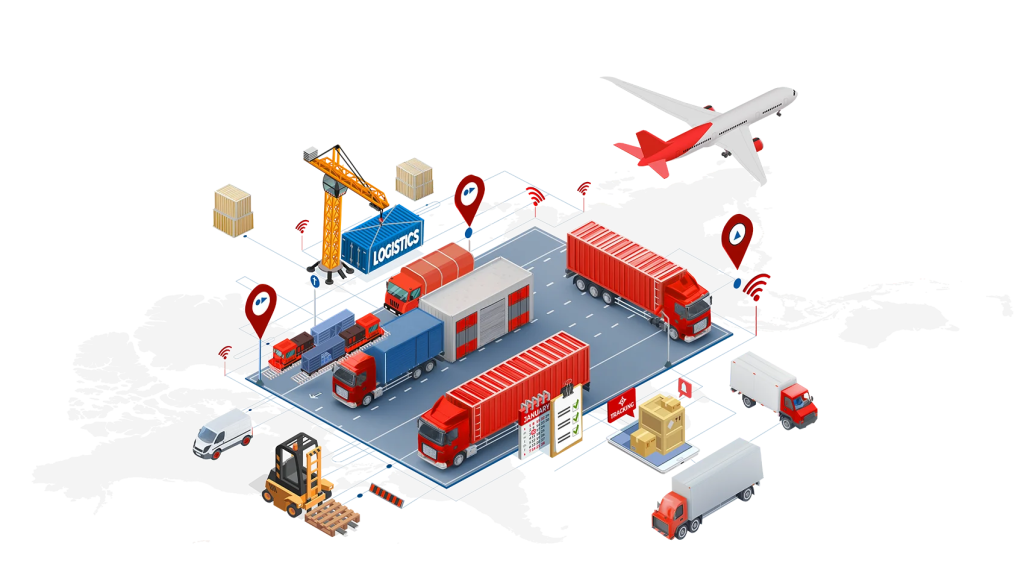Integrating Your Ecommerce Store with a Logistics Platform for Faster Fulfillment
Online shoppers expect their orders to arrive quickly. In fact, if a delivery is late, about 70% of customers won’t buy from that store again. To keep up, online businesses need to make their shipping process faster and smoother. The best way to do this is by connecting their store directly to a logistics platform so everything runs automatically.

1. What Does Integration Mean in Ecommerce Logistics?
Integration connects your ecommerce store directly with a logistics platform through Application Programming Interfaces (APIs) or built-in apps. This allows data to flow seamlessly between your store and your logistics partner, automating key processes such as:
- Order syncing: Orders placed on your website automatically appear on the logistics platform for fulfillment.
- Inventory updates: Stock levels are updated in real-time, preventing overselling.
- Tracking information: Tracking numbers are generated and sent back to your store, updating customers instantly.
Instead of manually exporting orders and emailing spreadsheets to your warehouse or fulfillment partner, integration ensures the entire process is automated, accurate, and fast.
2. Why Is Faster Fulfillment Important for Ecommerce Success?
Today’s consumers are used to Amazon-level shipping speeds. Faster fulfillment leads to:
- Higher customer satisfaction: Customers receive orders quickly, leading to positive reviews and repeat purchases.
- Improved conversion rates: Promising faster delivery at checkout often increases sales.
- Better inventory turnover: Products move faster, reducing storage costs and stock obsolescence.
Without integration, manual processes create delays, errors, and customer dissatisfaction.
3. Key Benefits of Integrating with a Logistics Platform

a. Automation Reduces Human Errors
Manual data entry is time-consuming and prone to mistakes, such as incorrect addresses or missed orders. Integration automates these tasks, ensuring:
- Accurate order details are sent to the warehouse.
- Correct shipping labels are generated.
- Real-time updates are provided to both customers and your team.
b. Real-Time Inventory Visibility
Integrated systems provide up-to-date inventory data across your sales channels and warehouses. This prevents overselling, backorders, and customer disappointment while enabling better restocking decisions.
c. Faster Processing and Shipping
Orders are instantly received by the logistics platform for picking, packing, and shipping without manual delays. It shortens order processing times significantly, allowing you to offer customers same-day or next-day shipping options.
d. Better Customer Experience
With integration, customers automatically receive tracking updates when their order is shipped. This transparency builds trust and reduces customer service inquiries about order status.
e. Scalability
Handling hundreds or thousands of orders manually becomes impossible as your business grows. Integration ensures your operations remain efficient and scalable without drastically increasing manpower.
4. How to Integrate Your Ecommerce Store with a Logistics Platform

Step 1: Choose the Right Logistics Partner
Select a logistics platform that offers robust integration options for your ecommerce platform (e.g., Shopify, WooCommerce). Leading logistics platforms like PostalParcel, ShipBob, or Flexport provide ready-to-use integrations or open APIs for custom setups.
Step 2: Assess Integration Methods
Most logistics platforms offer:
- Native apps: Pre-built apps for Shopify, WooCommerce, and other platforms that connect your store in minutes.
- API integration: For advanced setups, APIs allow developers to build custom workflows and features tailored to your business.
- Third-party connectors: Tools like Zapier or middleware software that bridge your store and logistics provider if no direct integration exists.
Step 3: Set Up and Test
- Install the app or connect via API.
- Sync products, SKUs, and inventory data to ensure accuracy.
- Place test orders to check if order syncing, label generation, and tracking updates function seamlessly.
Step 4: Train Your Team
Ensure your operations and customer service teams understand the new integrated process, where to access order statuses, and how to resolve exceptions quickly.
5. Common Challenges and Solutions

a. SKU Mismatches
Ensure your product SKUs in the store match those in the logistics platform to prevent fulfillment errors. Regular audits help maintain data accuracy.
b. Integration Downtime
Choose logistics partners with strong technical support and uptime guarantees. Always have a backup plan for manual processing during rare downtimes.
c. Managing Multi-Warehouse Fulfillment
If you use multiple warehouses or 3PLs, ensure your integration supports smart routing to ship from the nearest warehouse, optimising delivery speed and cost.
6. Real-World Example: Integration Impact

An emerging fashion brand using WooCommerce integrated their store with PostalParcel’s logistics platform. Before integration:
- Orders were exported manually, delaying fulfillment by up to 24 hours.
- Tracking numbers were emailed to customers manually, often leading to delays and increased support tickets.
After integration:
- Orders synced instantly, reducing fulfillment times from 2 days to under 12 hours.
- Customers received tracking notifications automatically within minutes of dispatch, increasing positive reviews by 30%.
7. The Future of Ecommerce Fulfillment
Integration is no longer optional in modern ecommerce. As customers demand faster, cheaper, and more transparent delivery, brands that automate their fulfillment workflows will win market share. Emerging trends include:
- API-first logistics platforms: Offering greater flexibility and faster integration for custom ecommerce needs.
- AI-driven fulfillment routing: Selecting optimal warehouses in real-time to minimise delivery times.
- Automated returns processing: Integrating reverse logistics for seamless customer experiences.
Conclusion
Connecting your online store to a logistics platform helps ship orders faster, work more efficiently, and keep customers happy. With automated order syncing, inventory updates, and tracking, you can spend more time growing your business instead of handling shipping issues. This kind of integration keeps your store ahead of the competition in today’s fast-paced online shopping world.
Industry Insights
news via inbox
Nulla turp dis cursus. Integer liberos euismod pretium faucibua








